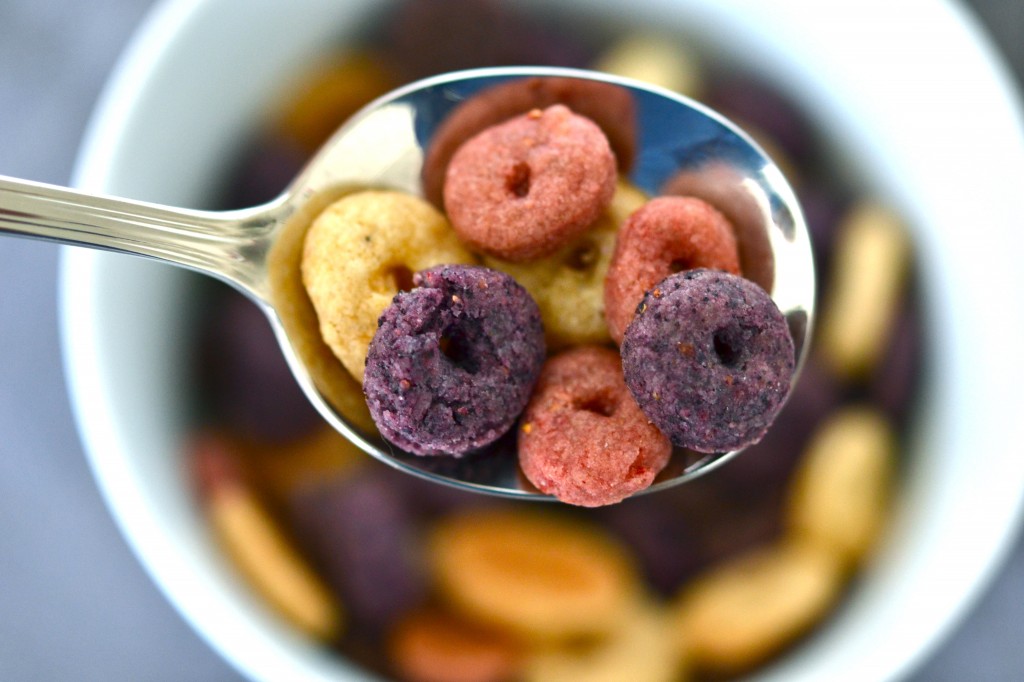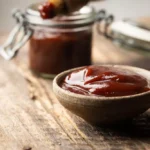Gluten-free diets have gained significant popularity in recent years, with more and more individuals opting for gluten-free alternatives to meet their dietary needs. For those who follow a gluten-free lifestyle, they are keen to know are fruit loops gluten free as it is crucial to carefully examine the ingredients of various food products to ensure they are safe to consume.
One popular breakfast cereal that often raises questions among gluten-conscious individuals is Fruit Loops.
In this article, we will delve into whether Fruit Loops are gluten-free, providing you with an in-depth analysis of the ingredients and manufacturing processes involved.
What Are Fruit Loops?
Fruit Loops are a famous brand of sweetened, fruit-flavored breakfast cereal. They are small, colorful, ring-shaped pieces made from corn and wheat flour. Fruit Loops are known for their vibrant colors and fruity flavors, including orange, lemon, cherry, lime, and grape. The cereal is often enjoyed with milk but can also be eaten dry as a snack. Fruit Loops have been a staple in many households since their introduction in 1963 by the Kellogg Company. They are widely available in supermarkets and enjoyed by people of all ages.
Are Froot Loops Gluten-Free?
No, Froot Loops are not gluten-free. Froot Loops is a popular breakfast cereal produced by Kellogg’s. It is made from corn flour, wheat flour, and oat flour, among other ingredients. Wheat flour contains gluten, wheat, barley, and rye protein. Gluten can cause adverse reactions in individuals with celiac disease or gluten sensitivity.
Therefore, those who follow a gluten-free diet should avoid consuming Froot Loops as it contains gluten-containing ingredients. It is essential for individuals with gluten-related disorders to carefully read food labels and look for certified gluten-free products to ensure their dietary needs are met.
Why Make Your Gluten-Free Fruit Loops?

Gluten-free diets have gained significant popularity in recent years, with more and more people opting to eliminate gluten from their meals. The increasing awareness of gluten-related health issues, such as celiac disease and gluten sensitivity, primarily drives this dietary choice. As a result, individuals are seeking alternative options for their favorite foods, including breakfast cereals like Fruit Loops.
Fruit Loops is a famous cereal brand known for its vibrant colors and fruity flavors. However, the original version of Fruit Loops contains gluten, which can be problematic for those following a gluten-free lifestyle. Making your gluten-free version of Fruit Loops allows you to enjoy this beloved cereal while adhering to your dietary restrictions. There are several reasons why making your gluten-free Fruit Loops can be a great idea:
Health Benefits
By making your gluten-free Fruit Loops, you control the ingredients used. Many store-bought cereals, including the original Fruit Loops, contain artificial additives, preservatives, and high sugar levels. Making them at home allows you to choose healthier alternatives and adjust the sugar content to your preference. Additionally, homemade gluten-free Fruit Loops can be made with whole grains and nutrient-rich ingredients, providing a healthier breakfast option.
Customization
Making gluten-free Fruit Loops allows you to customize the flavors and ingredients according to your taste preferences. You can experiment with different fruit powders or extracts to create unique flavor combinations. Additionally, you can control the sweetness level by adjusting the sugar amount or using natural sweeteners like honey or maple syrup. This customization ensures you can enjoy a personalized bowl of cereal that suits your preferences.
Cost-effectiveness
Store-bought gluten-free products are often more expensive than their gluten-containing counterparts. You can save money in the long run by making your gluten-free Fruit Loops. The ingredients required to make homemade gluten-free cereal are often readily available and more affordable when purchased in bulk. This cost-effectiveness allows you to enjoy your favorite cereal without breaking the bank.
Fruit Loops Ingredients List
Fruit Loops is a popular breakfast cereal produced by Kellogg’s. The ingredients list for Fruit Loops includes: sugar, corn flour blend (whole grain yellow corn flour, determined yellow corn flour), wheat flour, whole grain oat flour, oat fiber, soluble corn fiber, contains 2% or less of partially hydrogenated vegetable oil (coconut, soybean, and cottonseed), salt, red 40, natural flavor, blue 2, turmeric color, yellow 6, annatto color, blue 1, BHT for freshness. These ingredients are combined to create the colorful and fruity taste that Fruit Loops is known for.
Gluten-Free Cereal
Gluten-free cereal is a type of breakfast cereal specifically formulated and manufactured to be free from gluten, a protein found in wheat, barley, and rye. Gluten is known to cause adverse reactions in individuals with celiac disease, gluten sensitivity, or wheat allergies. Therefore, gluten-free cereals are designed to cater to the dietary needs of these individuals by providing a safe and suitable option for their breakfast meals.
Gluten-free cereals are typically made from alternative grains and ingredients that do not contain gluten. Common grains used in the production of gluten-free cereals include rice, corn, quinoa, millet, amaranth, and sorghum. These gluten-free grains serve as a base for creating various cereal products. Additionally, manufacturers may incorporate other ingredients such as nuts, seeds, dried fruits, and sweeteners to enhance the flavor and nutritional profile of the cereal.
The production process of gluten-free cereals involves strict adherence to gluten-free standards and regulations. Manufacturers must ensure that all equipment and facilities used in the production are thoroughly cleaned and free from any traces of gluten. Cross-contamination with gluten-containing grains is strictly avoided to maintain the integrity of the gluten-free claim.
Gluten-free cereals offer various options to suit different tastes and dietary preferences. They come in multiple forms, such as flakes, puffs, granola clusters, and oatmeal. Some popular gluten-free cereal brands include Nature’s Path Organic, Bob’s Red Mill, General Mills’ Chex line, Kellogg’s Gluten-Free Rice Krispies, and Barbara’s Bakery.
Consuming gluten-free cereal can benefit individuals with celiac disease or gluten sensitivity as it allows them to enjoy a nutritious breakfast without experiencing adverse health effects. However, it is essential to note that not all cereals labeled “gluten-free” are healthy or suitable for everyone. Some gluten-free grains may still be high in sugar, artificial additives, or lacking in essential nutrients. Therefore, reading the ingredient list and nutritional information before purchasing is crucial.
Other Gluten-Free Cereal Brands
Here are some other gluten-free cereal brands:
- Nature’s Path
- Bob’s Red Mill
- General Mills Chex
- Arrowhead Mills
- Cascadian Farm Organic
- Enjoy Life Foods
- Kind Healthy Grains
- Freedom Foods
- Erewhon
- Barbara’s Bakery
Make Your Cereal
Making your cereal can be a fun and creative way to customize your breakfast and ensure you get the necessary nutrients. By making your cereal, you control the ingredients, flavors, and textures, allowing you to create a grain that suits your taste preferences and dietary needs.
This comprehensive guide will walk you through the steps of making your own cereal from scratch.
Choose Your Base Ingredients
The first step in making your cereal is to choose the base ingredients. These will form the foundation of your cereal and provide the primary source of nutrients. Some common base ingredients for homemade cereal include oats, whole grains like quinoa or millet, nuts, seeds, and dried fruits. You can choose a single base ingredient or combine several to create a unique blend.
Add Flavorings
Once you have chosen your base ingredients, it’s time to add flavorings to enhance the taste of your cereal. This is where you can get creative and experiment with different combinations of flavors. Some popular condiments for homemade cereal include cinnamon, vanilla extract, cocoa powder, honey, maple syrup, or dried spices like ginger or nutmeg. You can also add a pinch of salt to enhance the overall flavor.
Incorporate Crunchiness
You can add various crunchy elements to give your homemade cereal a satisfying crunch. This can include toasted nuts or seeds like almonds, walnuts, sunflowers, or pumpkin seeds. You can also add crispy rice or puffed grains for extra texture. Experiment with different combinations to find the perfect balance of crunchiness in your cereal.
Sweeten It Up (Optional)
You can add sweeteners to your homemade blend if you prefer sweeter cereal. However, it’s important to note that many store-bought grains are high in added sugars, so using natural sweeteners in moderation is recommended. Some healthier options include dried fruits like raisins or dates, mashed bananas, or natural sweeteners like honey or maple syrup.
Mix and Store
Once you have chosen and prepared all your ingredients, it’s time to mix them. Combine all the ingredients in a large bowl and mix well until everything is evenly distributed. You can store your homemade cereal in an airtight container or resealable bags to keep it fresh. It’s best to store it in a cool, dry place away from direct sunlight.
Serving Suggestions
Your homemade cereal is now ready to be enjoyed! You can serve it with milk (dairy or plant-based), yogurt, or a topping for smoothie bowls or desserts. Feel free to add fresh fruits, nuts, or seeds on top for extra flavor and nutrition.
Frequently Asked Questions (FAQ’s)
Why Are Fruit Loops Not Gluten-Free?
Fruit Loops are not gluten-free because they contain ingredients such as wheat flour and malt flavoring, which both contain gluten.
What Special K Cereal Is Gluten-Free?
Special K has several gluten-free cereal options, including Special K Gluten Free Cereal, Special K Protein Gluten Free Cereal, and Special K Nourish Gluten Free Cereal.
Are Fruit Loops With Marshmallows Gluten-Free?
No, Fruit Loops with Marshmallows are not gluten-free.
What Cereals Should Celiacs Avoid?
Celiacs should avoid cereals that contain gluten, such as wheat, barley, and rye.
Can You Get Gluten-Free Rice Krispies?
Yes, you can get gluten-free Rice Krispies. Kellogg’s offers a gluten-free version of their popular cereal made with brown rice and no gluten-containing ingredients.
Are Disney Fries Gluten Free?
No, Disney fries are not gluten-free.
Why Did They Change Fruit Loops To Froot Loops?
Fruit Loops was changed to Froot Loops primarily for trademark reasons, as the new spelling allowed Kellogg’s to secure a unique and distinctive brand name. The change also helped emphasize the fruity flavors of the cereal and make it more appealing to children.
Why Are Froot Loops Unhealthy?
Froot Loops is considered unhealthy due to its high sugar content, artificial flavors, and lack of nutritional value. Consuming Froot Loops regularly can contribute to various health issues such as obesity, diabetes, and dental problems.
What Is The Bird On Fruit Loops?
The bird on Fruit Loops is a fictional character named Toucan Sam, who serves as the mascot for the cereal. Toucan Sam is known for his vibrant colors and large beak, representing the cereal’s fruity flavors.
Are Cheerios Gluten Free?
No, Cheerios are not gluten-free. They are made from whole-grain oats, which naturally do not contain gluten.
Conclusion
In conclusion, Fruit Loops are not gluten-free. Despite their colorful appearance and fruity flavors, Fruit Loops contain gluten ingredients, making them unsuitable for individuals with gluten sensitivities or celiac disease. The primary source of gluten in Fruit Loops is the wheat flour used in the cereal’s production proc






